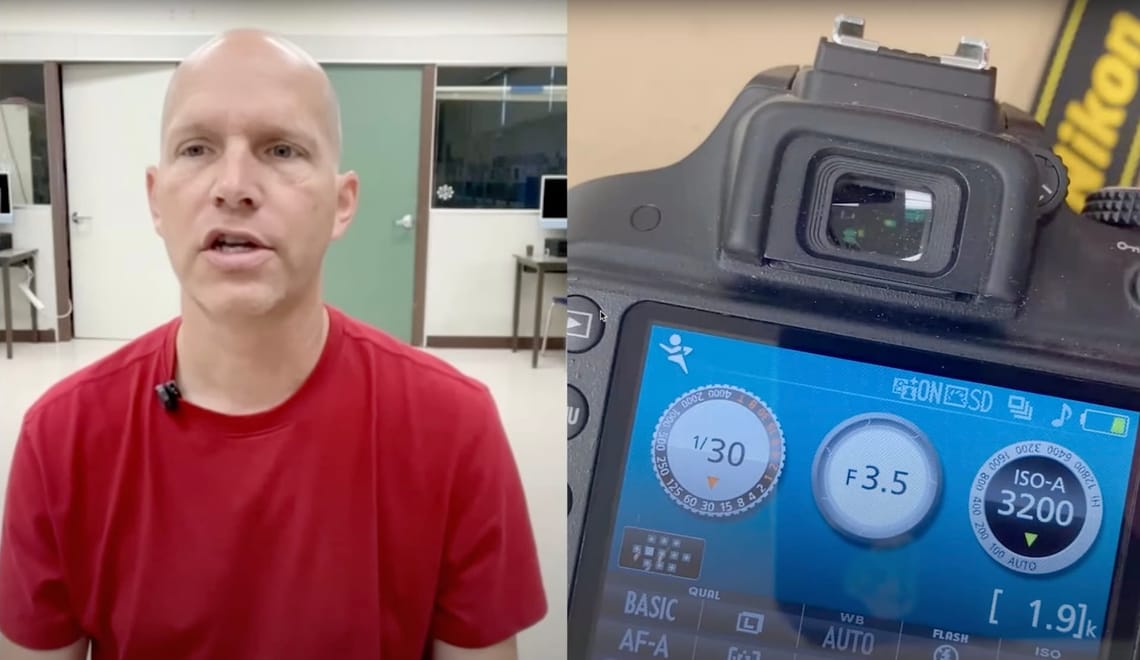
Nikon D3300 Camera Start Settings
Hello! I’m going to go over some settings for the Nikon D3300. This is a great little camera, and I’m pretty excited to show you how to set it up and use it.
Setting Up the Lens
First, let’s look at the lens. If you see the message on the back of the camera that says, “Before taking photos, rotate the ring to extend the lens,” here’s what you need to do. Look for the little dot on the lens. Push that in and rotate it to unlock the lens. You’ll notice it’s on the “lock” position. Rotate it to extend the lens for use. This allows you to zoom in or out. When you’re done using the lens, push the button and rotate it back to the lock position. This saves space when storing the camera.
Checking the Battery
Next, check if the battery is charged. Turn the camera on and look at the battery indicator on the screen. If the battery is low (one bar or less), it needs to be charged. Turn the camera off, flip it upside down, and find the battery compartment. Push the latch in the direction of the arrow to unlock it. You may need your thumbnail or a small tool to do this. Once unlocked, push the yellow tab to release the battery. Always do this over a surface to prevent dropping the battery or the camera.
Now, take the battery to the charger. Insert the battery into the charger, ensuring the prongs on the battery align with the charger. The light on the charger should turn red to indicate it’s charging. Once fully charged, the light will turn green. Replace the charged battery in the camera by inserting it gently. If it doesn’t go in easily, you may have it the wrong way—don’t force it. Push the yellow tab slightly to lock the battery in place, then close the compartment.
Attaching the Camera Strap
Always use the camera strap to avoid accidental drops. Put the strap around your neck or on a sturdy surface when working with the camera. If the strap comes off or isn’t attached correctly, ask someone for help or secure it properly yourself.
Setting the Camera to Program Mode (P)
For general purposes, set the camera dial to P (Program Mode). This mode allows you to adjust some settings while letting the camera manage others. Turn the camera on and press the shutter button halfway to wake the screen if the backlight turns off.
Navigating the Menu
To access the menu, press the Menu button. Here are some basic settings to check:
• Image Quality: Set it to JPEG Basic.
• Image Size: Set it to Large.
• Auto Distortion Control: Turn this on.
• ISO Sensitivity: Set it to 100 for now. Enable Auto ISO Control, and set the maximum sensitivity to 12,800 with the minimum shutter speed on Auto.
• Metering: Leave this as default.
• Movie Settings: Set the resolution to 1920x1080 at a normal quality.
Autofocus and Taking Pictures
To focus, press the shutter button halfway. You’ll hear the autofocus mechanism working. If it’s dark, the camera’s AF Assist Light will turn on to help. On the lens, ensure VR (Vibration Reduction) is set to ON and the focus mode is on A (Autofocus). Press the shutter button all the way down to take a picture.
Viewing and Adjusting Pictures
To view your photos, press the Play button. You can zoom in or out using the zoom controls. For example, 18mm is zoomed out, and 55mm is zoomed in. Adjust the framing by moving closer or farther from your subject and looking through the viewfinder.
Formatting the Memory Card
If you need to delete all the photos on the memory card, go to Menu > Format. Confirm by selecting Yes, and all images will be erased.
Putting the Camera Away
When you’re done, lock the lens by rotating it to the Lock position. Always put the camera on a stable surface while doing this to avoid dropping it. Carefully close the lens to protect it, ensuring everything is compact and secure for storage.
I hope this gives you a good overview of how to get started with the Nikon D3300. With these tips, you’ll be ready to take great photos and properly care for your camera. Happy shooting!
